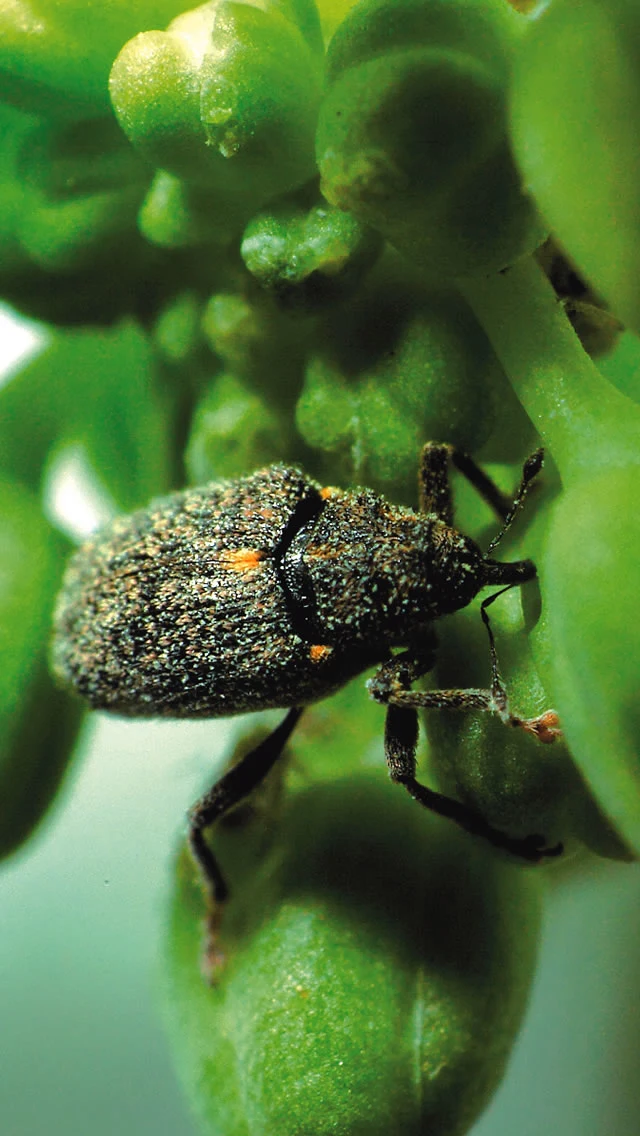
Cabbage Stem Weevil
Ceutorhynchus quadridens

Ceutorhynchus quadridens
Identification
Cabbage stem weevils are similar in appearance to the cabbage seed weevils, however cabbage stem weevils have a white rectangular mark on the top centre of the elytra (hardened forewings which protect the hindwings) (see picture 1 and 2). The adults are dull grey in appearance and are up to 3 mm long with a reddish/brown colouration to the antennae and the latter parts of the legs. The larvae are 4-5 mm long, creamy white with a brownish head, and are ‘C’ shaped.
Symptoms
The main difference between damage caused by the cabbage stem weevil and the oilseed rape winter stem weevil
(C. picitarsis) is that the plants attacked by the winter stem weevil are stunted and visibly distorted but plants invaded by cabbage stem weevils do not show any external signs of damage with the exception of small exit holes which can often be seen below leaf scars. On closer inspection damage and discolouration of the stem pith can be seen which is caused by the tunnelling activity of the cabbage stem weevil larvae.
Attacked plants can develop a yellowed and stunted appearance with reduced leaf turgidity.
Life-cycle
The adults migrate from their overwintering sites to lay eggs in the petioles or along the main veins of the leaves of brassica plants in early summer. Immediately after hatching the larvae bore into the plant petioles and stems. When fully fed the larvae exit the plants to pupate in the soil. After a period of around 3 weeks the adult emerges in late summer and after a suitable feeding period, they move to sheltered locations to overwinter.
Importance
Cabbage stem weevil activity can lead to plant lodging and increased susceptibility to plant fungal diseases which can enter the plant stems through the exit holes.
In recent seasons there have been reports of increased occurrence and activity of this pest from areas such as East Anglia.
It is not thought to be economically damaging but if pest pressure becomes severe then control measures might need to be considered.
Spring sown oilseed rape is more likely to be affected than winter sown oilseed rape.
Threshold
None established.
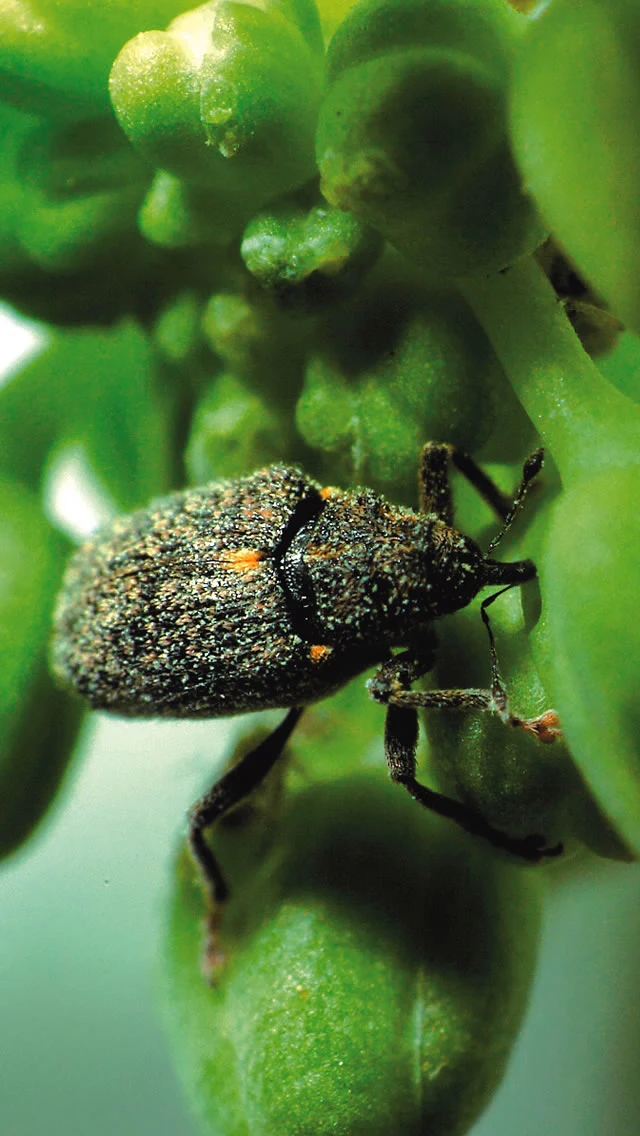
Cabbage stem weevil adult
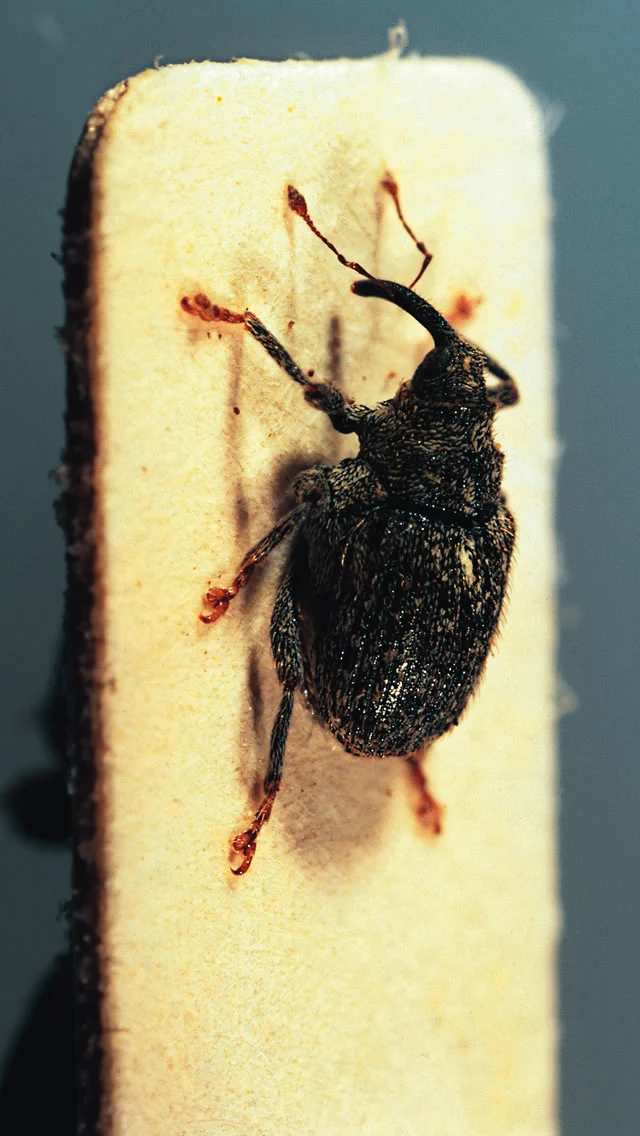
Cabbage stem weevil. Note the distinguishing white rectangular mark just behind the head on the wing case
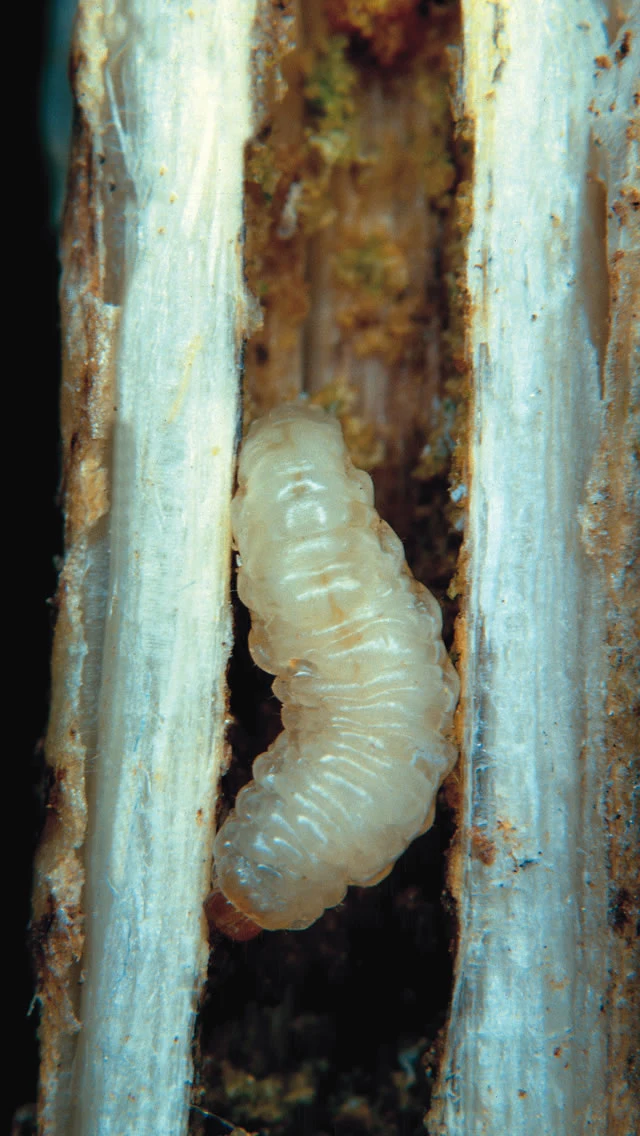
Cabbage stem weevil larva
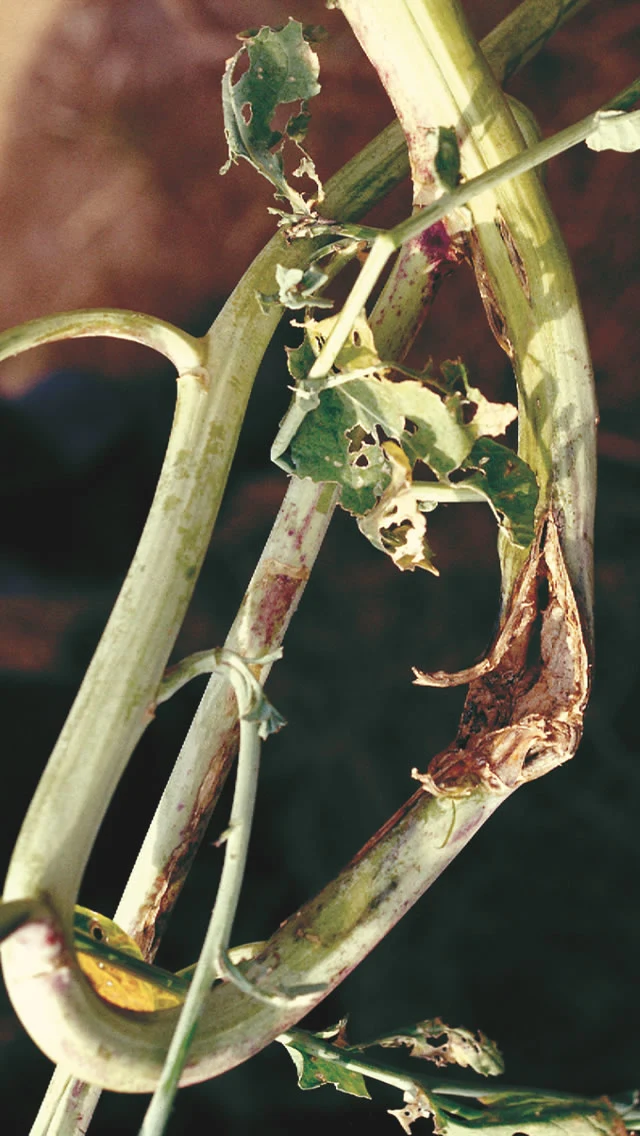
Cabbage stem weevil damage


